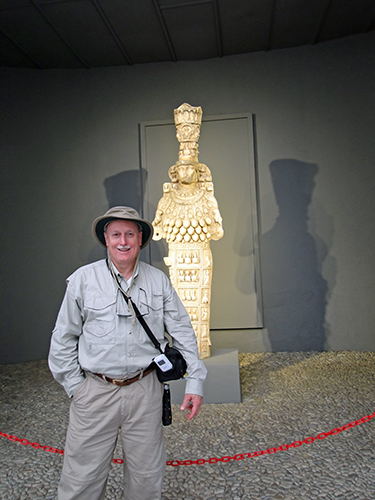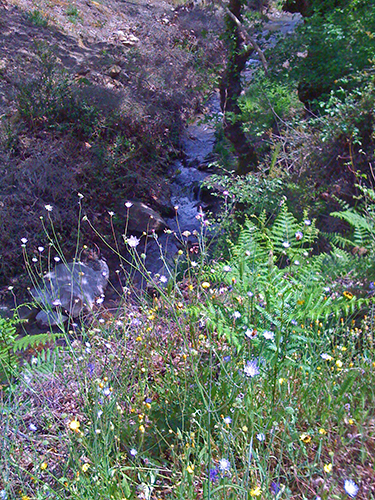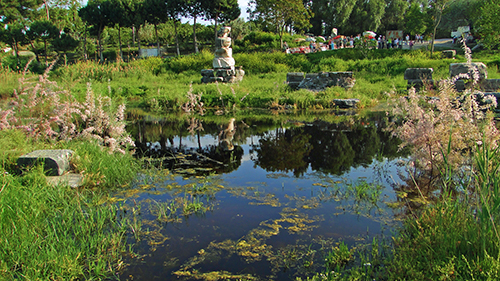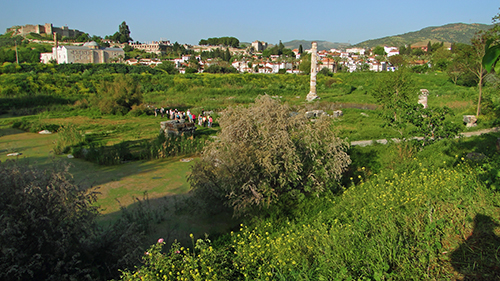Ephesus Museum. Breakfast at 8 am then off to the Ephesus Museum, not that far from our hotel. The museum has been rearranged and enlarged a little since we last were here in 2002. But, sadly, we learn that the famous gladiator exhibit showing material from the recently discovered gladiator burial grounds of Ephesus has been closed. Oh no! Jerry is devastated. Studying the gladiator artifacts at Ephesus was tops on his list for the whole trip. We still enjoyed the museum’s holdings, especially material related to the emperor Domitian, as well as the contributions of the Pollio family, one of the most famous patron, benefactor families in the history of Ephesus.
Below is the famous goddess, Artemis, worshipped at Ephesus, who had the most famous Artemesian complex in the world. The temple of Artemis was one of the seven wonders of the ancient world. The silversmiths, whose main business was selling silver Artemis figurines, rioted against Paul and his associates in Ephesus (Acts 19:23–40).
Ephesus had an elite society of the wealthy who lived in the terrace homes along Curetes Street. These homes have been excavated, revealing the opulence of Roman aristocratic life. We will visit one of these terrace homes tomorrow. The museum had a nice display that gave the feeling of the interior of one of these homes.
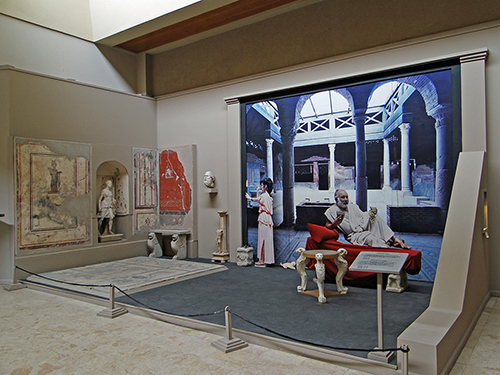
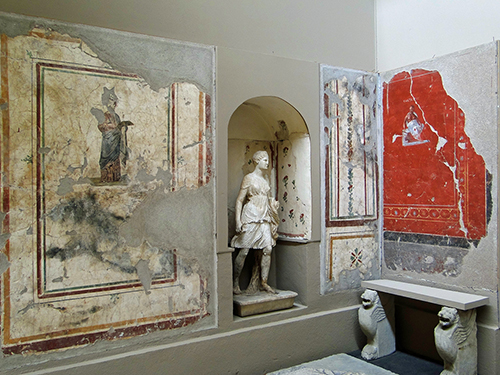
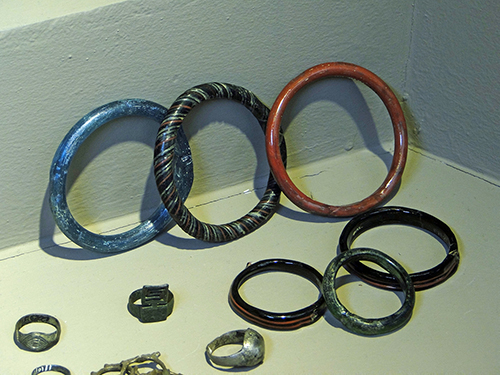


In one of the terrace homes were found exotic ivory carvings depicting military scenes, which were a new addition to the Ephesus museum. Below is just one panel of this beautifully executed work of art.
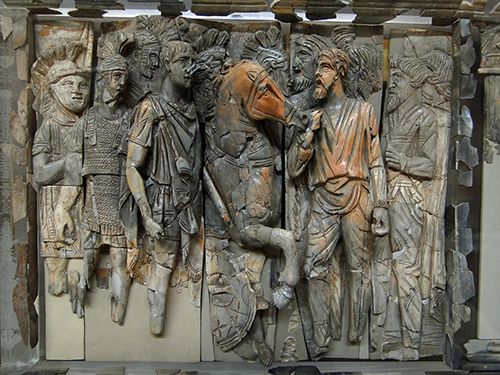
One of the most popular decorative styles in elite Roman homes was the mosaic floor. Images reflected social values, typical scenes of elite life, famous philosophers, characters in Greek and Roman myths, and other traditional portrayals.
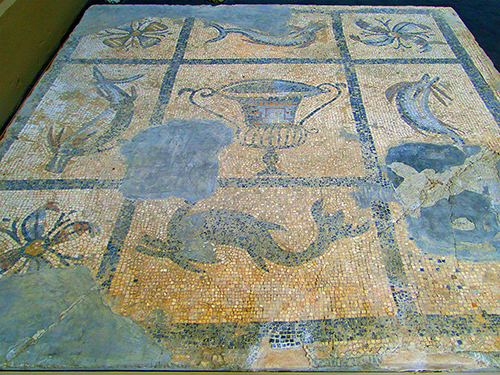
A coin from Ephesus of the Augustan period depicting Caesar Augustus (27 B.C.–A.D. 14) is followed by the partial remains of a statue of Augustus, the Caesar who ruled the world when Jesus was born.
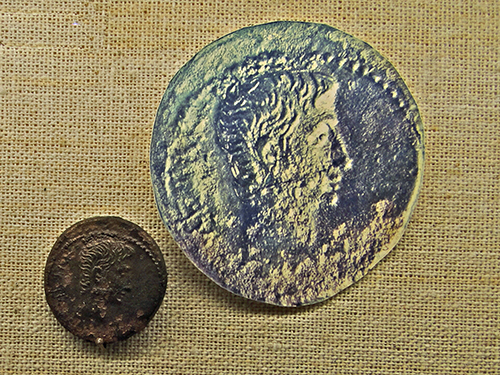

Friezes from altar area of the Domitian temple in Ephesus are pictured below. The latter part of Domitian’s reign (81–96) is the likely context for the book of Revelation.
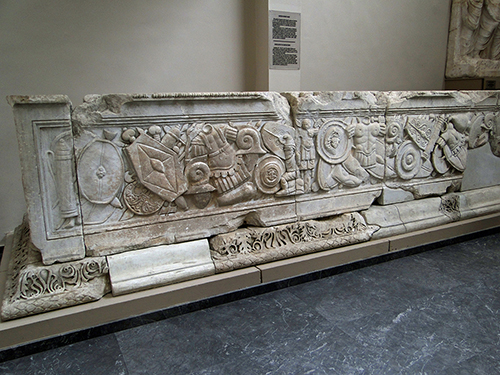
The head and a hand is all that survives of a colossal statue of the Flavian imperial dynasty erected in the Domitian temple complex, thought to be either that of Domitian’s brother, Titus (79–81), or of Domitian himself.
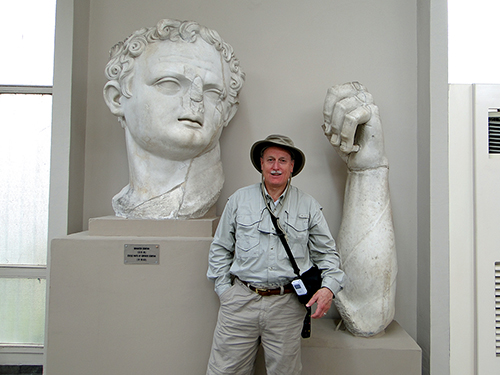
The Egyptian gods Isis and Serapis were worshipped at Ephesus, popular among Romans throughout the empire. Isis is depicted in the first image below, then Serapis in the next image, both found in one of the terrace homes.

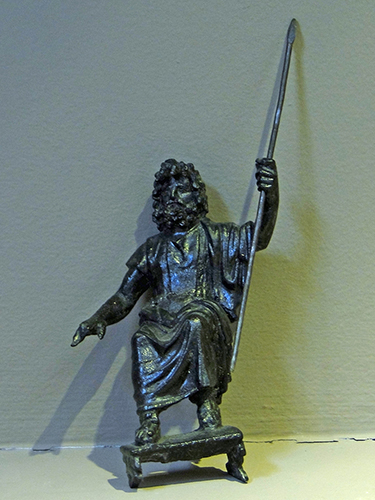
Medical instruments illustrate a fairly sophisticated knowledge of the healing arts in the Roman world. One is reminded of Luke, the “beloved physician” (Col 4:14).
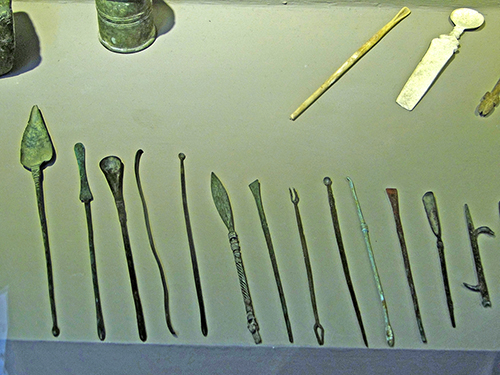
Stone ossuaries were a common form of burial.
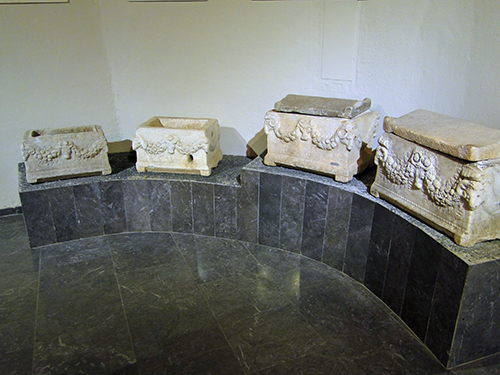
Jerry stands by the base of friezes showing a rare Roman defeat of the Parthians, a highly celebrated event because the Parthians were the great fear of the Roman army on its eastern boarders. Parthians were responsible for one of the most disastrous defeats the Roman army ever endured in the battle of Carrhae (53 B.C.).
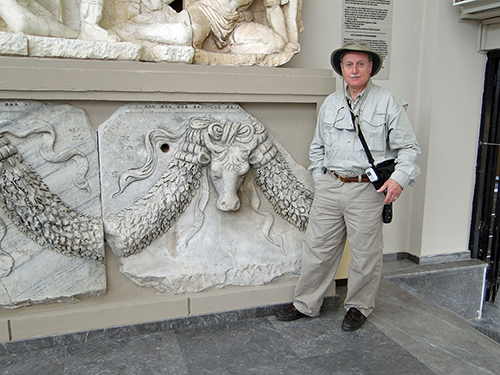
Romans used terra-cotta and lead for their pipes. The lead pipe below with its stone sleeve sockets was found in the altar area of the temple of Artemis.
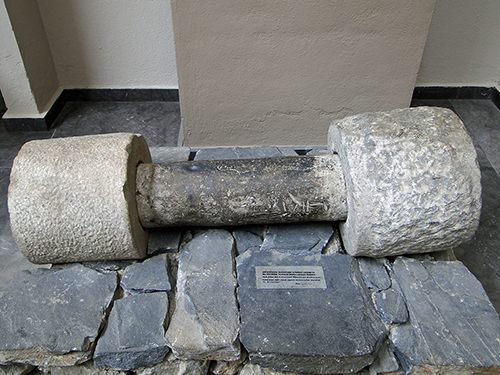
The few remains of a scene that decorated the entrance to the Pollio Fountain, one of the important water sources for the city of Ephesus that was fed by the Pollio Aqueduct we later visited in the afternoon.
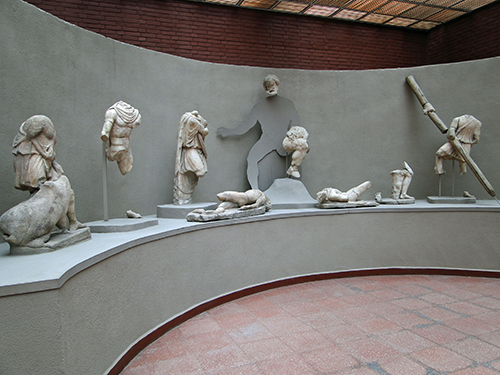
Crisler Library. On the way back to the hotel, we stop at the Crisler Library and ring the bell to make our contact we somehow missed yesterday afternoon. A lady finally answers the gate, whom we later find out is called Nora, and Jerry introduces himself. He asks if we might see Janet, explaining that he’s been in email contact with her. Nora shocks us with the news that Janet is in a rush, about to leave for the airport! However, she said she would “check.” Janet comes out in a flurry and welcomes us, but that she has no idea who we are and no memory of making arrangements for us to stay at the Crisler apartment soon becomes obvious. We are silently stunned. All our arrangements were worked out in detail months before we left the States. Jerry can document an email trail with Janet, including the exact cost of the apartment! Though she was supposed to be ready to help us with special permission to see the gladiator graveyard and to get a VIP tour of the Terrace Houses and to put us up with room and board, Janet seems to have not even a smidgen of memory of any of these discussions or arrangements. Instead, she’s supposed to fly to Boston today. All European flights are a mess, however, because of the Iceland volcano issue—she won’t be flying today she finds out!
Jerry and I both seemed to realize immediately without saying a word to each other that no purpose would be served trying to remind Janet of her commitments to us. She is totally preoccupied, completely consumed with trying to make alternate arrangements for getting out of Europe and across the Atlantic to Boston. Janet does take time to offer to show us around the grounds of the Institute (after all, we are there), and we have coffee and cake on the patio. She totally has no idea she’s messed us up royally! Jerry mentions the gladiator exhibit, and she explains that the new curator of the Ephesus Museum inexplicably took the exhibit down! Janet has a young archeologist working for her that she asks to call to see if our seeing the gladiator items in storage can be worked out. (All of this she had told Jerry by email would be arranged before we arrived.) Basically, we have determined that she’s a certified ditz who should not be trying to administrate the Crisler Institute!! She just has no administrative skills and no memory. She showed us a handwritten card catalog she has a staff member working on—yes, handwritten, no less! No computerization of any of her library records!! This Institute obviously is not a well-run place. She also showed us some rare books that she took out of a regular cabinet (not from any kind of fireproof safe). Whew!! What a risky place to keep them. We left our email address in case the viewing of the gladiator items might be worked out, but, actually, we entertain little hope that Janet will get us anything, except recommending that we go off the beaten path to find the Pollio Aqueduct, which we did not know about so had no plans before we came to try to see the site.
Pollio Aqueduct. Janet gave us directions to the Pollio aqueduct, an architectural span over a river bed in a small but steep and deep ravine that few tourists ever see. The remains are located about 5 kilometers outside of Selçuk off the Aydin highway just beyond the upper entrance to the site of Ephesus. Off we go on our own for an unplanned side trip to find an aqueduct unmarked with no trail. Jerry would just love to find this site, as he loves anything Roman, and its direct tie to a major New Testament city would be icing on the cake. It’s a cloudy day—I pray God gives us a little sunshine for Jerry’s sake for taking pictures, since the Janet Crisler debacle over the last two days has left him stunned and near speechless—heartbroken really. We find the path as Janet had described just off the Aydin road and hike down to the aqueduct. It’s really amazing. As we are taking pictures, the sun pops out—thank you, Lord! The aqueduct is called Pollio because an inscription on the aqueduct states that the system was paid for by the Pollio family, one of the great patron families of Ephesus. So beautifully engineered. Of course, Jerry finds a way to climb up the very steep ravine wall to get on top of the aqueduct!! That little monkey! He gets good pictures.
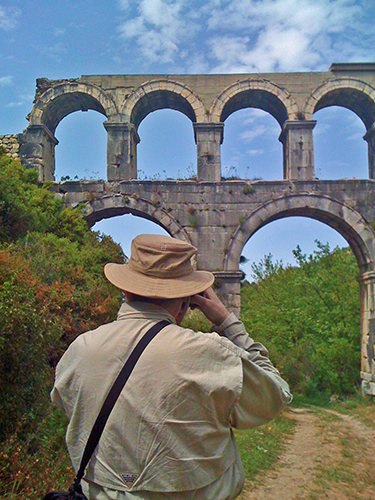


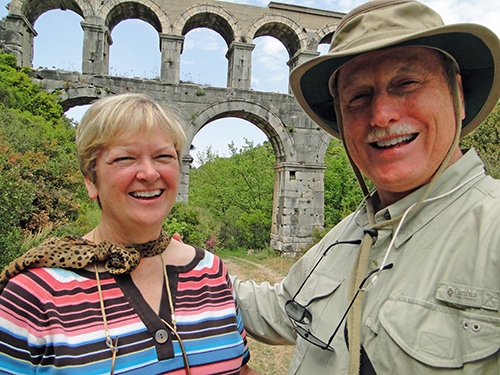
We head back to the hotel and check our email on the lobby computer, hoping against hope to have news from Janet that we will get in to see the gladiator artifacts. Sadly, we only read confirmation that seeing the gladiator artifacts is a “no go”! What a huge disappointment. While we were with Janet earlier, she and Jerry talked about how bringing students to the Institute works, but we are disappointed to learn that she herself handles all those arrangements—that kills that! We are now gun shy and not a little nervous about trusting her for “arrangements” for anything. As long as Janet handles the arrangements, Jerry realizes he is not going to be bringing any student groups to the Crisler Institute and Ephesus as he once had dreamed.
Artemesian. From our hotel, Jerry walked down to the Artemesian, the site of the ancient temple for the worship of the patron goddess of Ephesus, Artemis, and one of the seven wonders of the ancient world. I stayed in the hotel room to rest, record expenses, etc. A good while later, Jerry returned, hot from his late afternoon, long hike. He said he got good pictures in the late afternoon sun. The site is hard to visit because the entire area is swampy, which historically always was the problem Ephesus had with the slow running river constantly silting up her bay. Expensive dredging was a continual battle against the forces of nature. Over the centuries Ephesus finally succumbed.
Part of the modern city of Selçuk is in the background. In fact, our boutique hotel is on the first row of buildings a little to the left of the solitary column.
Archeologists erected one of the original columns of the temple to give an impression of the huge dimensions of the temple complex. The apostle Paul would have walked past this column in his coming and going while ministering for 2–3 years in the city on the Third Missionary Journey.

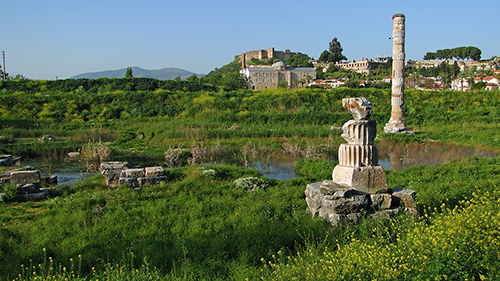
After Jerry cooled down, we go to dinner at another boutique hotel across the street on the backside of our hotel. Over dinner we muse about Janet and try to make sense of this disappointing let down. Paul spent two to three years in Ephesus, so the site is such an important place for our understanding of Paul and the early Christian movement. Working out something for students to spend time here studying at the Crisler Institute and visiting the site of Ephesus would be great, but we decide working with Janet is just too risky.
After dinner, we walk back across the street to our own little hotel and checked our email one more time on the lobby computer. I then go upstairs and wash out Jerry’s shirt, etc. from today—pretty grimy from the hard climb up the aqueduct ravine wall and the later hot hike to the Artemesian. I then write in this journal, which takes a little while, and it’s off to bed. Jerry, my little monkey scholar, already has fallen asleep.
For a video of the Ephesus action today:
